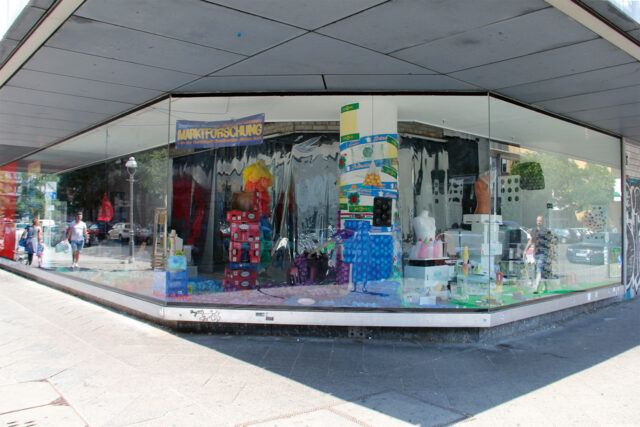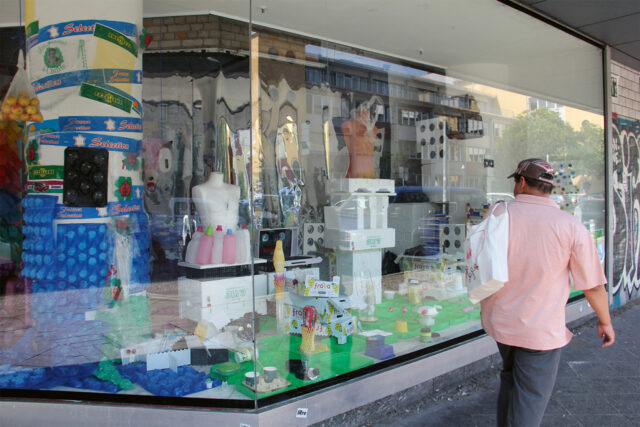So ist der ideale Projektraum vor allem ein Raum, in dem der Wert eines Werkes nicht durch seinen Verkauf definiert wird.Marktorientierung spielt für mich keine Rolle, mich interessiert entweder ein spezielles Thema und dazu lade ich Künstler*innen ein oder ich erarbeite mit Künstler*innen und anderen Gruppen spartenübergreifende neue Konzepte.In den letzten zehn Jahren haben sich die Finanzierungsmöglichkeiten von Offspaces der bildenden Kunst sehr weiterentwickelt. Das betrifft nicht nur den Projektraumpreis oder die Basisförderung, sondern auch zum Beispiel die spartenoffene Förderung oder den Topf Präsentationen zeitgenössischer Kunst. Mit einer Kombination aus Getränkeverkäufen, Projektraumpreis, Basisförderung, Spartenoffener Förderung sowie ab und zu Raumvermietung war es uns möglich, unseren Raum zu finanzieren und selbst, ungenügend, entlohnt zu werden. Unsere künstlerisch-kuratorische Arbeit ist tatsächlich, wie der Name schon sagt, Arbeit, die angemessen vergütet werden sollte. Es ist falsch, Offspace-Arbeit ins Ehrenamt zu verdrängen. Hier wird derselbe Fehler wiederholt, der bei Künstler*innen gemacht wird. Jede andere Arbeit wird selbstverständlich entlohnt, nur die künstlerische nicht, da stehen wir noch am Anfang. Und auch bei Offspaces wird erwartet, dass die Menschen, die diese Räume gestalten und als Ressourcen zur Verfügung stellen, gar nichts bis wenig verdienen. Dabei sind Offspaces mit die ersten Anlaufstellen für Künstler*innen in Berlin. Es ist höchste Zeit, Honoraruntergrenzen für freie Kurator*innen und Offspace-Betreiber*innen festzulegen und Offspaces nicht nur als Nice-to-have oder Hobby von beruflich anderweitig beschäftigten oder reichen Menschen zu betrachten, sondern als einen tatsächlich professionellen Lebensinhalt. Dazu gehört auch, kuratorische Arbeit endlich als künstlerisch-publizistisch anzuerkennen und Kurator*innen/Offspace-Betreiber*innen in der Künstlersozialkasse zu versichern.

